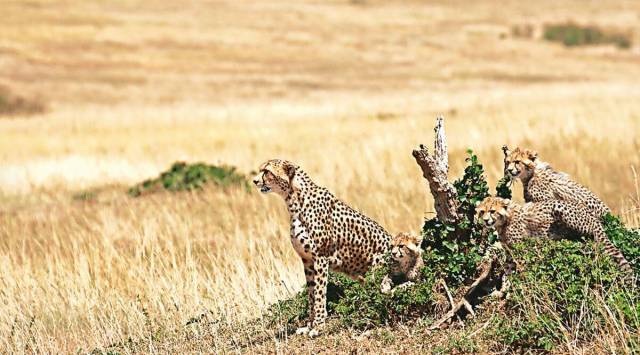“It appears that Kuno is not sufficient for so many cheetahs… Why don’t you look for a suitable place in Rajasthan? Merely because Rajasthan is ruled by (an) Opposition party does not mean you will not consider it,” a bench of Justices BR Gavai and Sanjay Karol told the Centre.

What the Centre didn’t tell the court was that soon after India inked the cheetah MoU with Namibia on July 20 last year, the Rajasthan Forest Department on August 8 wrote to the National Tiger Conservation Authority (NTCA), entrusted by the SC in 2020 to run the Cheetah Project, proposing to host a few cheetahs in Mukundra. And the Centre rejected it.
In its response on August 24, the NTCA wrote: “Management objectives of tiger reserve are different and management efforts are on to build up tiger population… at this juncture, the proposal for establishing cheetah population in Mukundra Hill tiger Reserve is not agreed.”
To the apex court’s pointed query, Additional Solicitor General Aishwarya Bhati, appearing for the Centre, said that all possibilities were being looked into.
Madhya Pradesh chief wildlife warden J S Chauhan confirmed that the state made multiple requests to the NTCA in the last couple of months for shifting cheetahs. “At Kuno, the problem is both space and logistics,” he told The Indian Express.
While NTCA member-secretary S P Yadav did not respond to requests for comments, a senior ministry official said that the “(cheetah) team was reluctant to go back to the state (Rajasthan) after saying no.”
Story continues below this ad
Asked if Rajasthan was pursuing its cheetah proposal, state chief wildlife warden Arindam Tomar said there are “no plans” as of now. Rajasthan has recently made a case before the NTCA for bringing wild dogs and gaurs (Indian bison) to Mukundra. “There is no sanction yet,” said Tomar.
Declared a tiger reserve in 2013, Mukundra got its first tigers in 2018 when a pair was shifted from Ranthambhore to a 12-foot-high enclosure encompassing 82 sq km. The reserve has lost four adults and three cubs since and is now left with a solitary tiger. But the enclosure constructed in 2017 made Mukundra one of the potential sites in the government’s Cheetah Action Plan.
“A few cheetahs can be absorbed immediately and safely in Mukundra’s enclosure. In MP, we are preparing Gandhisagar (wildlife sanctuary) for cheetahs but it would require at least a year to develop the area. By that time, Kuno will be oversaturated,” said a forest official in the Bhopal headquarters.
According to the Cheetah Action Plan 2022, Kuno has space for 23 cheetahs. Eight were flown in from Namibia on September 17 last year, followed by another 12 from South Africa on February 18. Day after the first cheetah’s death was reported on March 27, four cubs were born in Kuno. Two more cheetahs died, on April 23 and May 10, and the population is pushing the limit at 21.
Story continues below this ad
MK Ranjitsinh, head of the committee appointed by the SC to monitor the Cheetah Project, said he could not think of a reason why the ministry was not exercising the Mukundra option.
“I have been repeatedly suggesting the release of cheetahs at Mukundra which Rajasthan has offered. Mukundra’s huge enclosure is ready to receive the cheetah with five species of cheetah prey. It was certified as the best conservation breeding site for cheetahs by Namibian, South African and Indian experts. Yet the ministry doesn’t take this up and gives no reason for the same,” he said.









